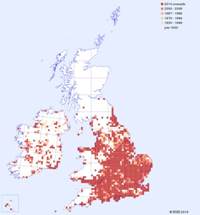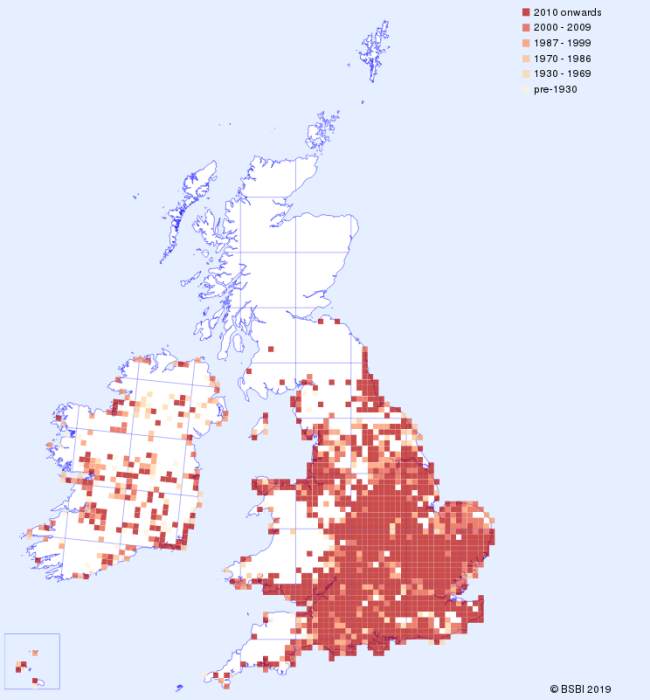The Bee Orchid, with its uncanny resemblance to a Bumblebee, is probably our best-known orchid, fostering a curiosity in the natural world seldom achieved by other plants. The ability of Ophrys apifera to spread and adapt to new sites and habitats has, to some extent, mitigated its decline due to the loss and destruction of its more traditional habitats. The Bee Orchid's habit of 'popping up' somewhere unexpected (including in peoples' gardens) adds to the delicious mystery that surrounds a species seems to demonstrate evolution in such an unequivocal way. Only the plants that resemble closely enough the insects that could act as pollinators survive? In reality (and particularly in the case of Bee Orchids in Britain) this has now proven not always to be the case: most of our Bee Orchid plants are self-pollinated. This results in another thought-provoking feature of Bee Orchids - the frequency with which strange variations occur in the flowers. The Bee Orchid's adaptability to new sites makes listing its habitats a lengthy task, but this orchid is known to occur on roadside verges, in sand dune systems, unimproved grassland, abandoned mines and quarries, to name but a few. In Britain and Ireland Bee Orchids flower from early June to late July. Ophrys apifera is mainly found in southern Britain and peters out towards the north, where it is found in Lancashire and Cumbria. Elsewhere in Europe this species is found as far north as Holland and Germany and its range extends southwards to the Mediterranean region.
| Distribution Map | Key Features | |
 |
Records for the Bee Orchid from BSBI are shown on the map with most recent in front. (Hover the mouse over the small map to expand it.) |
Plant: 10 - 60cm, commonly up to 45cm. |
Image Gallery for Bee Orchid Ophrys apifera
| Pollination | Taxonomy & Hybrids |
Bee Orchid flowers are usually self-pollinated within hours of the flowers opening when the pollinia (the pollen-bearing structures) fall forward in front of the stigma. The structure of the pollina is so fragile that the slighest breeze blows them on to the sticky surface of the stigma and pollination is achieved. |
The Bee Orchid belongs to the Ophrys genus. Its scientific name derives from the Latin words 'apis' and 'fero' meaning 'bee-bearing'. |
Articles about Bee Orchid in JHOS
-
